A Farmers Market Guide to Greens
March 9, 2018
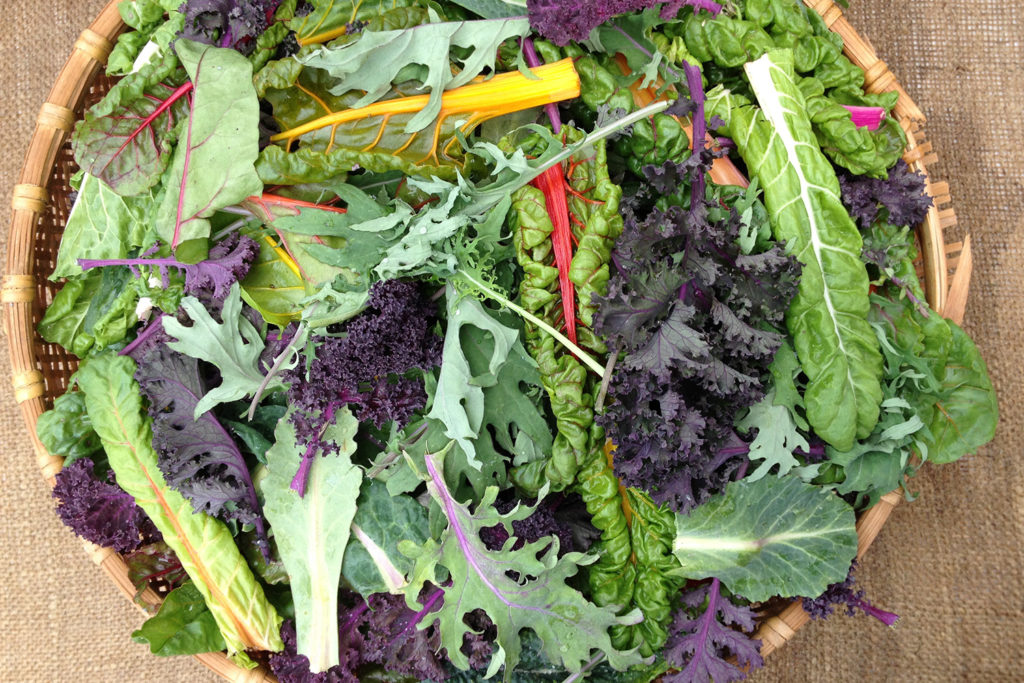
Spring is almost here, which means an explosion of all things green at the market. Although many greens can be found throughout the year, they are most abundant, lush, and tender in the spring, with over 40 types available, from spinach, arugula, and kale to nettles, cress, and pea shoots.
The term “greens” refers to leafy plants that are cooked or eaten raw. Many of these vegetables and herbs are rich in vitamin C, beta carotene, and dietary fiber, with darker leaves typically being more nutritious.
Remove greens from compostable bags when you get home, or they will lose moisture quickly. To store greens, we recommend keeping them in a container or plastic bag in the refrigerator. A salad spinner is ideal, because the greens are held loosely in the basket, away from direct contact with water. You can also wrap them in moist towels and keep them in the crisper. And don’t toss those beet, radish, and turnip tops—they make perfectly delicious cooked greens themselves!
Here are some of the more common (and a few unusual) greens you’ll find at the farmers market as we head into spring.
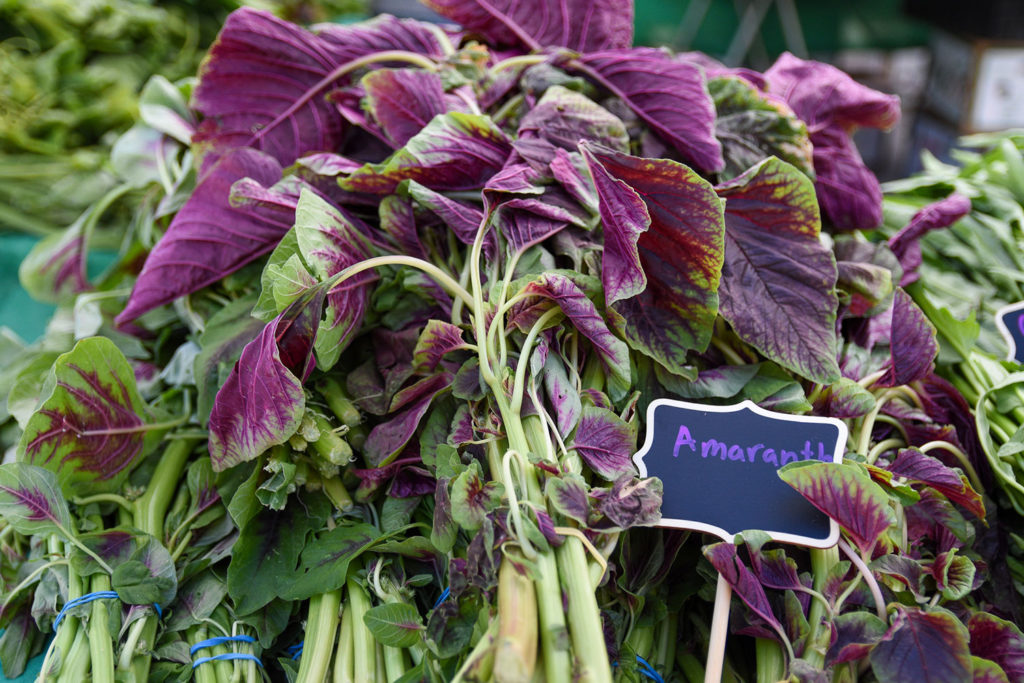
Amaranth greens: Though often a deep reddish color, these “greens” are eaten when young and have a slightly sweet flavor. They can be cooked like spinach. Unless they are very young, it’s best to chop them before cooking.

Arugula: This delicious leafy plant enhances any salad with its peppery flavor. Arugula is great on pizza (added at the end of baking) or sandwiches. Look for freshly cut arugula with firm and tender green leaves. The more mature leaves have a more pungent bite.
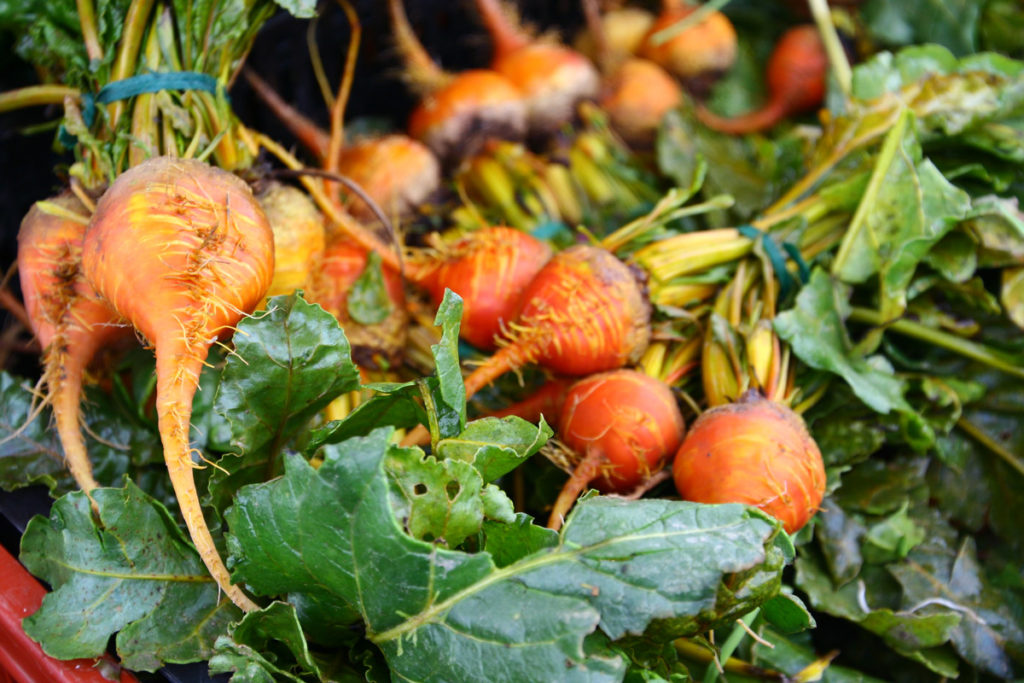
Beet greens: Beet greens are rarely sold on their own—they come with the roots when purchased by the bunch. Similar in taste to chard and spinach, the leaves are flat with ribs that match the color of the beet and are generally steamed, sautéed, or braised. (Radish greens are more pungent, but are also edible. Just try this radish leaf salad!)
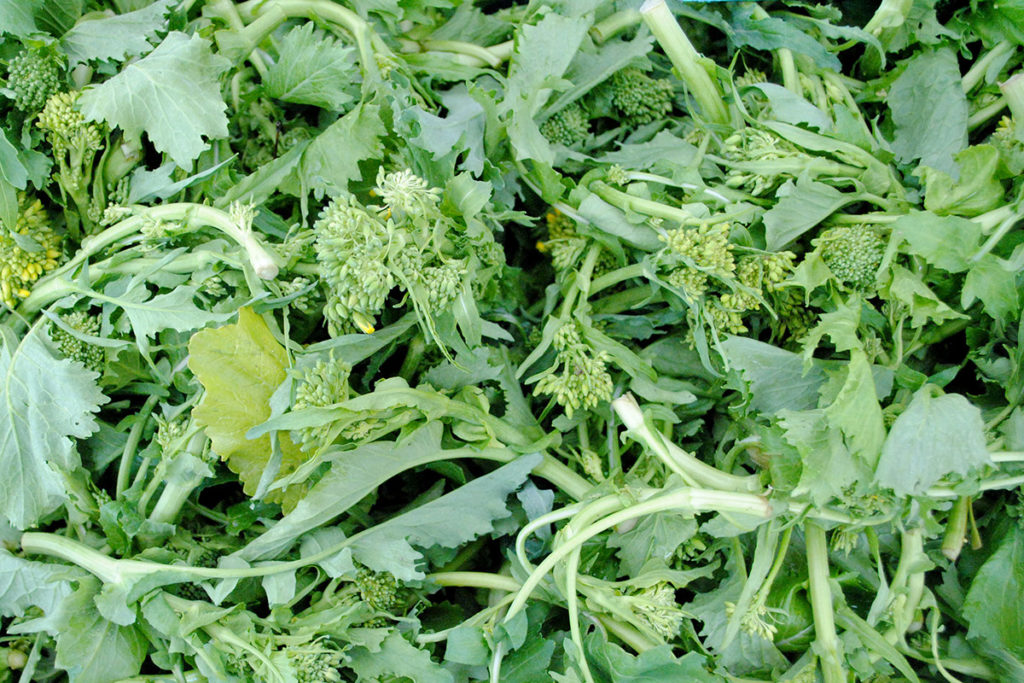
Broccoli rabe: Popular in Italian, Chinese, and Portuguese cooking, broccoli rabe, or rapini, has many jagged-edged leaves and a bud that resembles broccoli, sometimes with small, yellow flowers that are also edible. The taste is similar to broccoli but more bitter.
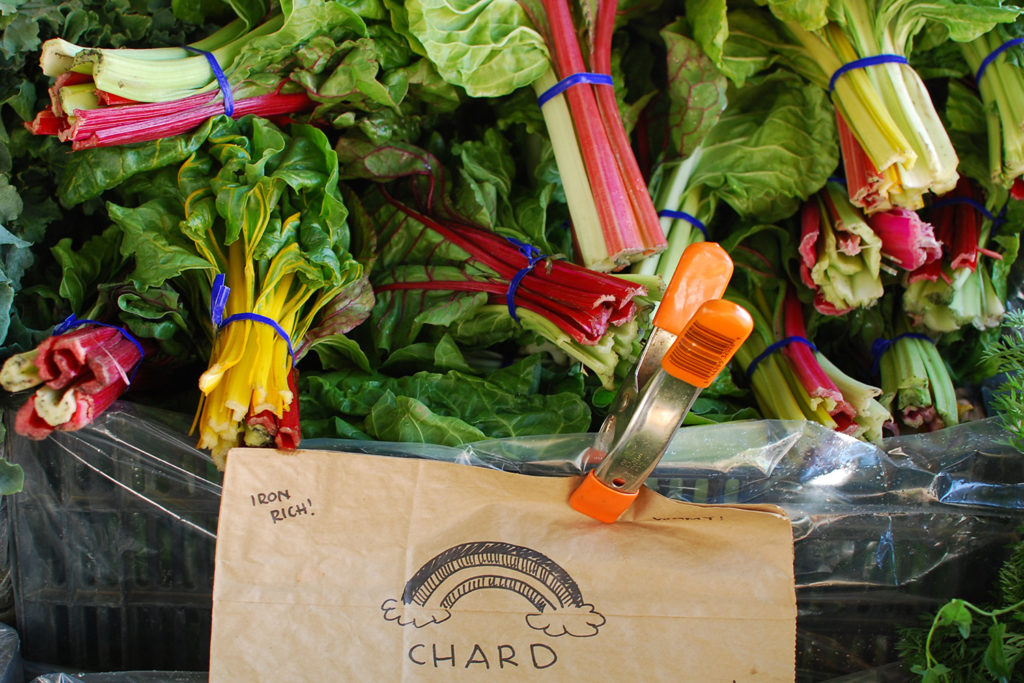
Chard: Chard has wide, fan-like leaves and a thick, crunchy stalk that comes in a variety of colors, including white, red, yellow, and orange. It can be eaten raw, but cooking makes it sweeter and less bitter. The stems take longer to cook than the leaves, so throw them into the pot first.
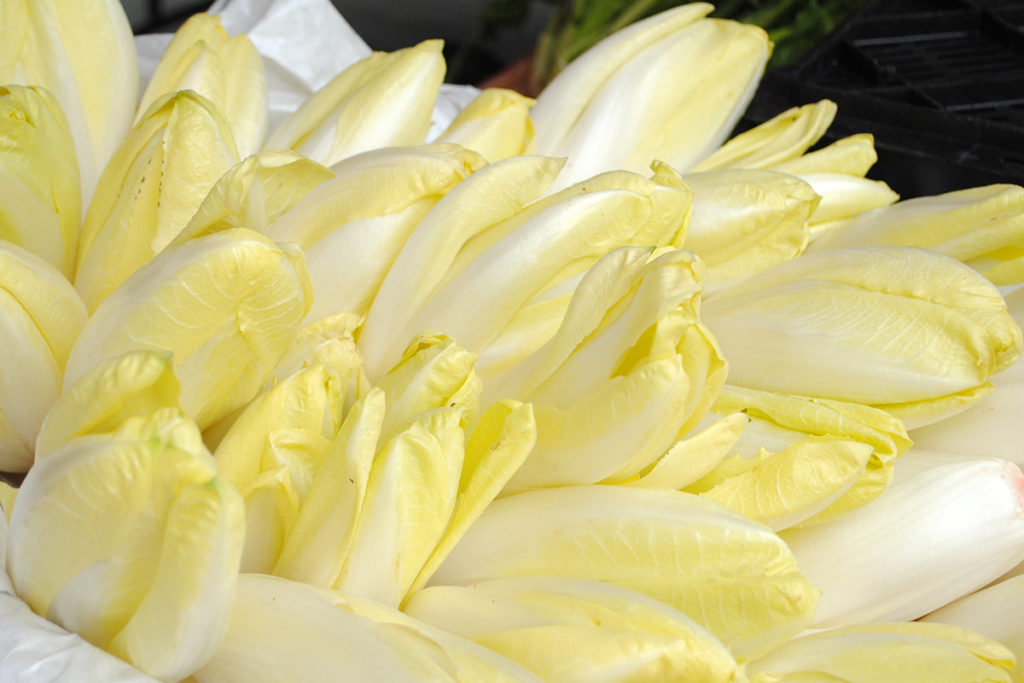
Chicories: Chicories are bitter leafy greens, such as Belgian endive, radicchio, and puntarelle. Their bitterness mellows out with cooking. Belgian endive (different from Endive, below) is pale yellow and crisp with leaves that are tasty grilled or stuffed and served as an hors d’oeuvre. Stalky puntarelle requires a bit of prep work, while radicchio can be eaten raw salads or cooked in Italian dishes.
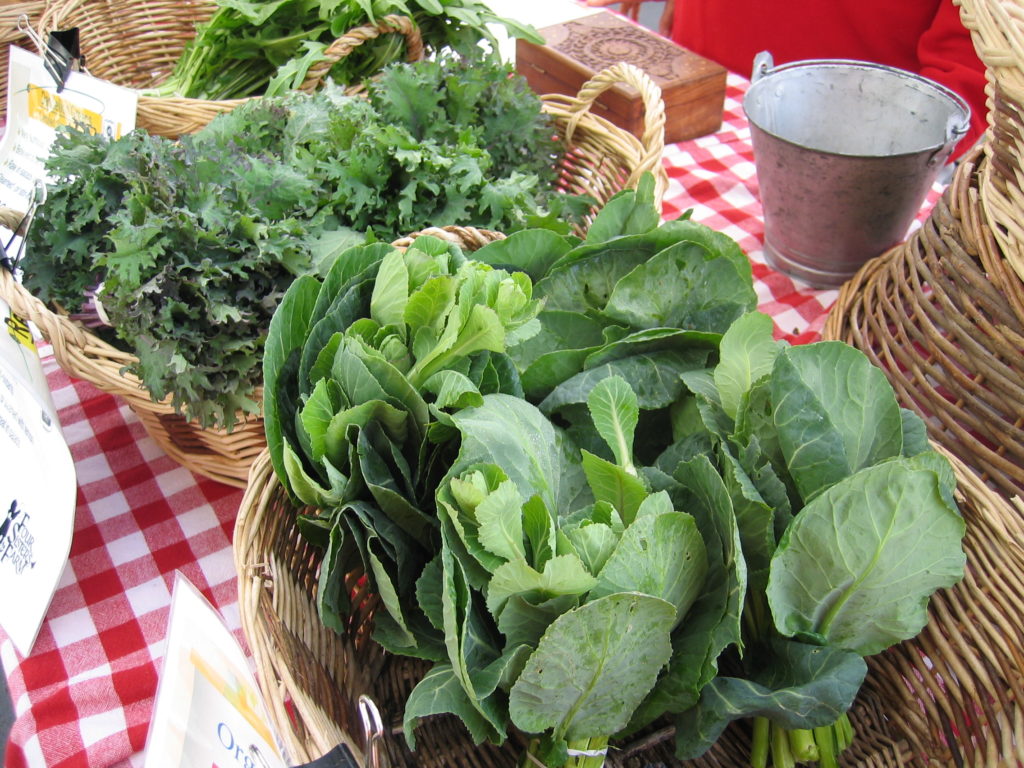
Collard greens: Collard greens belong to the Brassicaceae family, making them an excellent choice in the cooler months. Their blue-green leaves are broad and smooth in texture, and their size makes them a good tortilla substitute for wraps.

Cress: Cress is closely related to the mustard plant and, like its relative, it is a fast-growing herb with a tangy, peppery flavor. It is generally cultivated in warmer climates with moist soil. Its leaves are commonly used in salads and sandwiches or as a garnish.
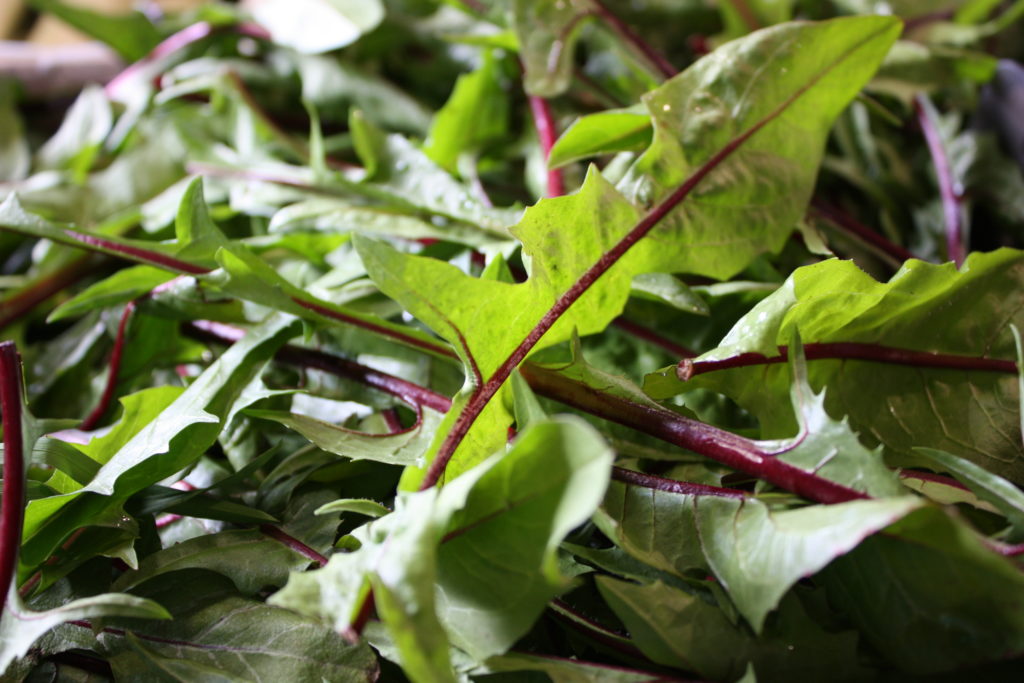
Dandelion greens: Related to the common weed, these greens have a bitter flavor that mellows when cooked. They are delicious steamed or braised and can be used in place of spinach. They also make a complex and spicy addition to your favorite grilled cheese sandwich.
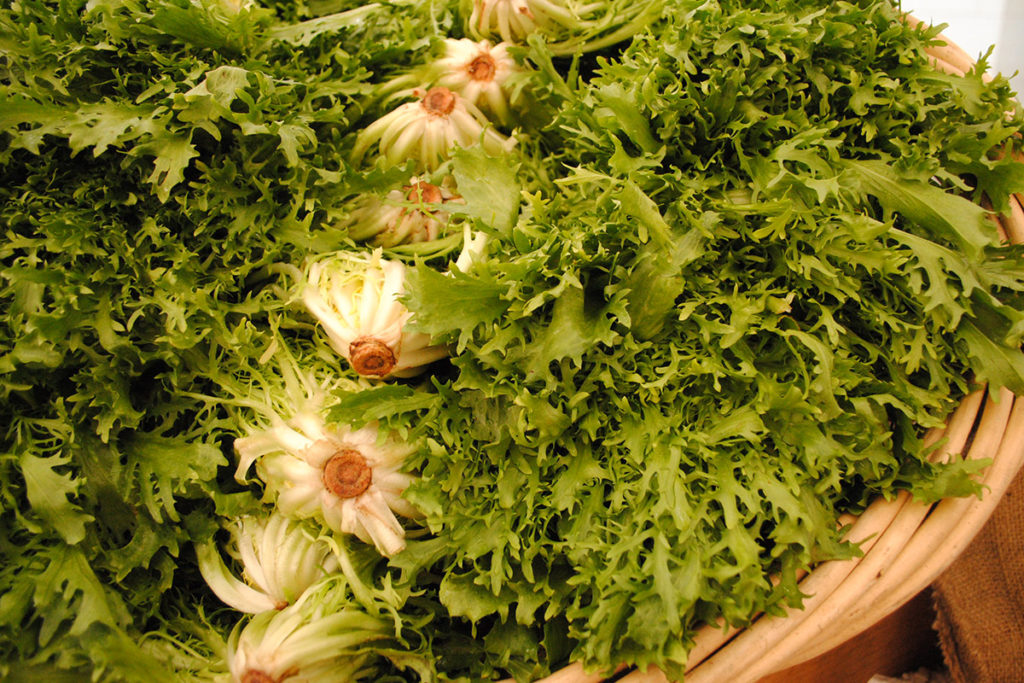
Endives: Not to be confused with “Belgian endive” (see Chicories, above), true endives include frisée and escarole. Frisée, also known as “curly endive,” has frilly leaves and is often found in salad mixes. Escarole has broad, sturdy, pale yellow to light green leaves that are both bitter and sweet. Both greens can be sautéed, grilled, or eaten raw.
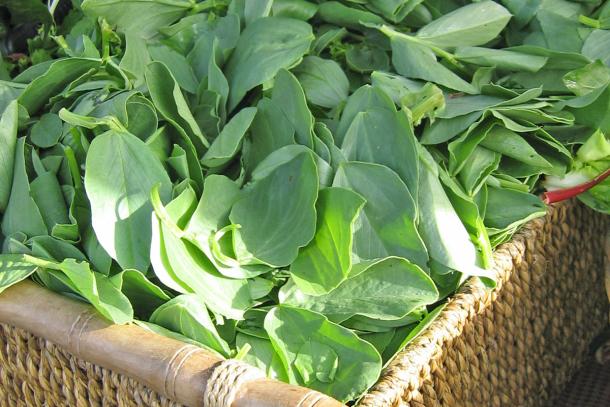
Fava greens: Farmers often plant fava beans as a protective and regenerative cover crop in the winter. While many of those plant get tilled into the soil, some make their way to the market in the spring. Fava greens are similar to young spinach, but the leaves are thicker, with a milder flavor. The leaves are most tender early in the season, which lasts through the end of spring. They can be added to salads or cooked in pasta or eggs.
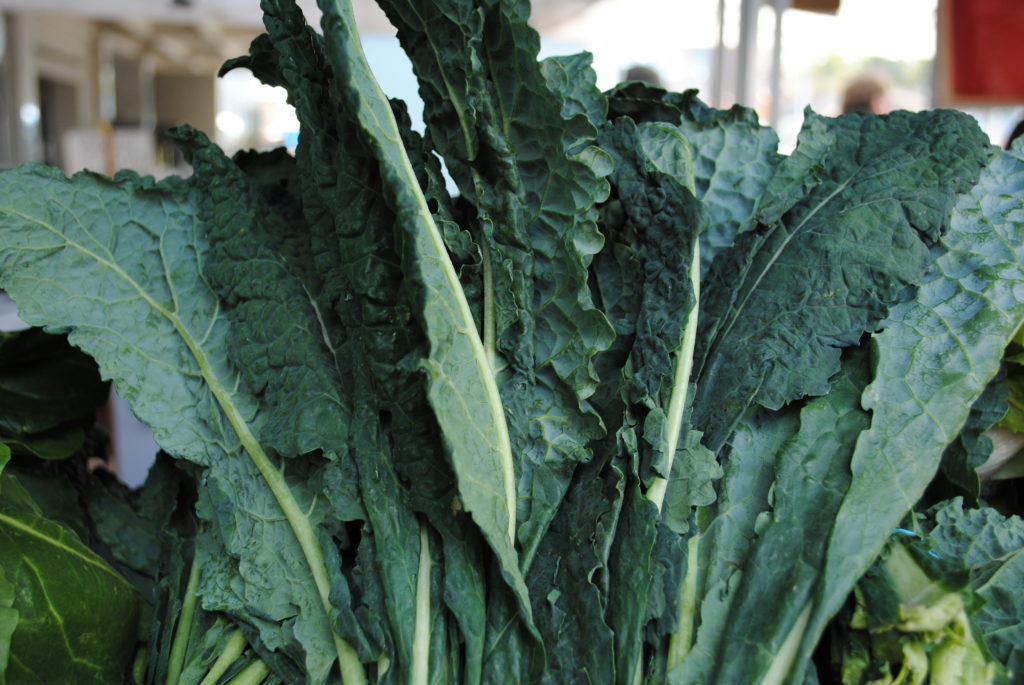
Kale: Purple, red, or green, kale can be eaten raw (adding a crunchy punch to salads) or cooked. Look for crisp stalks and unwilted leaves. Varieties available at the market include Green, Curly, Lacinato (“Dino”), Red Russian, Redbor, Siberian, and Spigarello.

Lettuce: Usually eaten raw in salads, lettuce has tender leaves with a crunchy rib. There are six common cultivar groups for lettuce—butterhead, Chinese lettuce, iceberg, looseleaf, romaine, and summer crisp—but hundreds of varieties exist within each of these categories.

Mizuna: This Asian green, a member of the mustard family, has delicate, frond-like, bright green leaves. Mizuna is a very hardy plant (both heat and cold tolerant) with a characteristic fresh peppery-cabbage flavor.
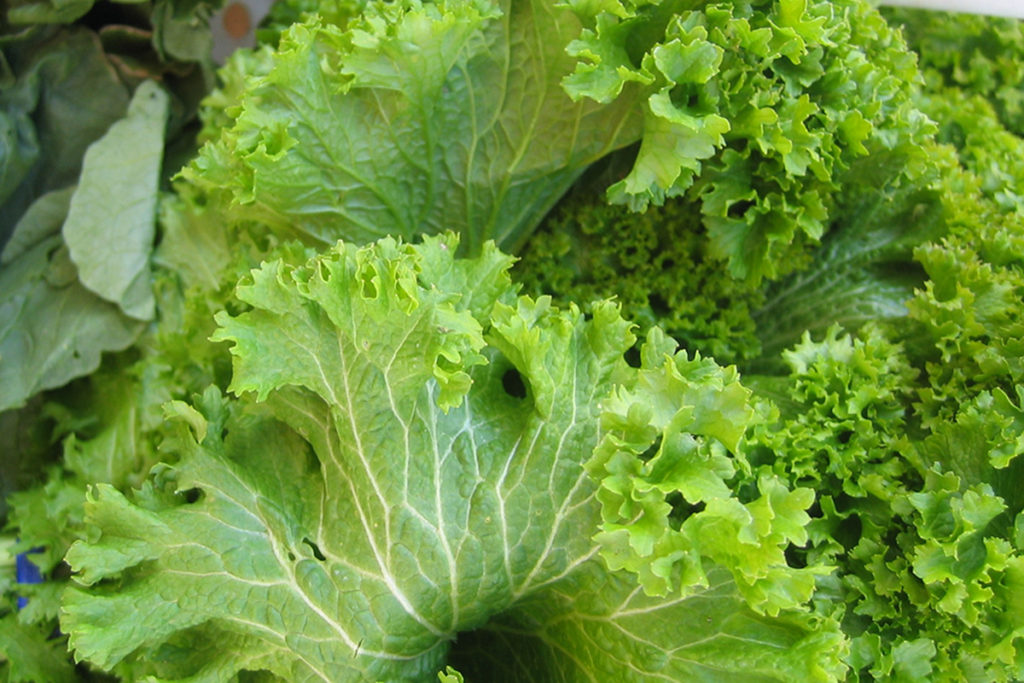
Mustard greens: These flavorful, spicy greens come from the same plant that makes mustard seed. Mustard leaves can be flat, crinkled, or ruffled, and can take on a number of colors, including beautiful reds and purples.
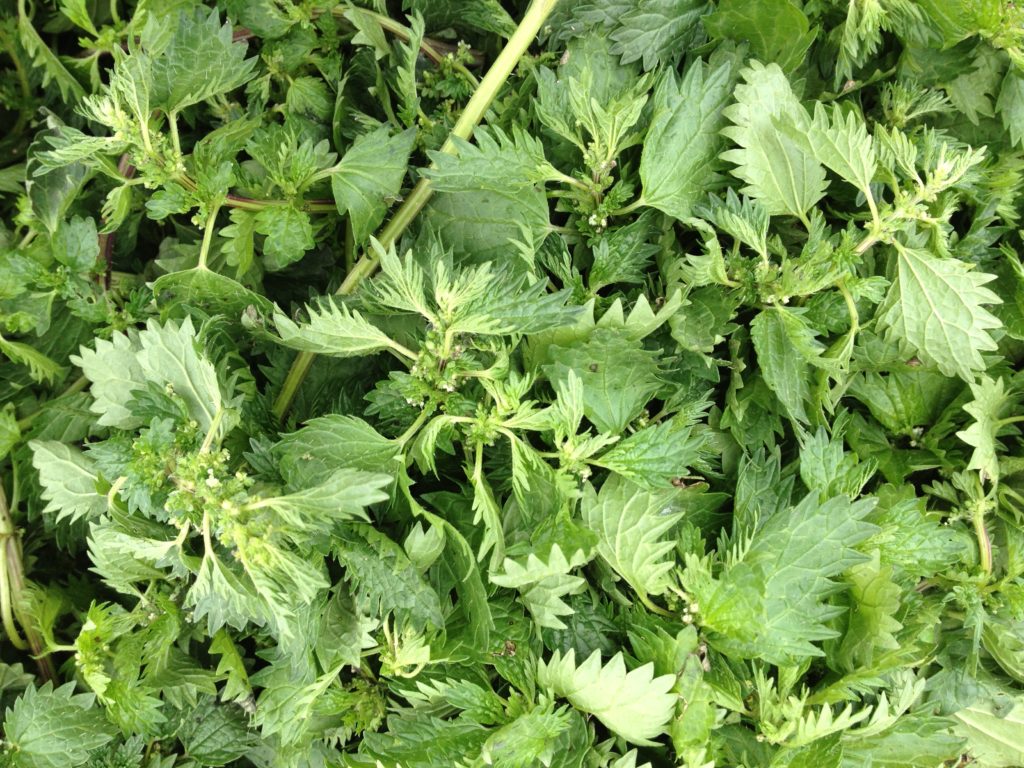
Nettles: Nettles have long been used as a medicinal herb, treating arthritis, anemia, hay fever, and kidney problems. When cooked, the leaves have an earthy flavor and become very soft, making them perfect for blending into a soup. Be careful when handling raw nettles; blanching or cooking them will remove the sting.
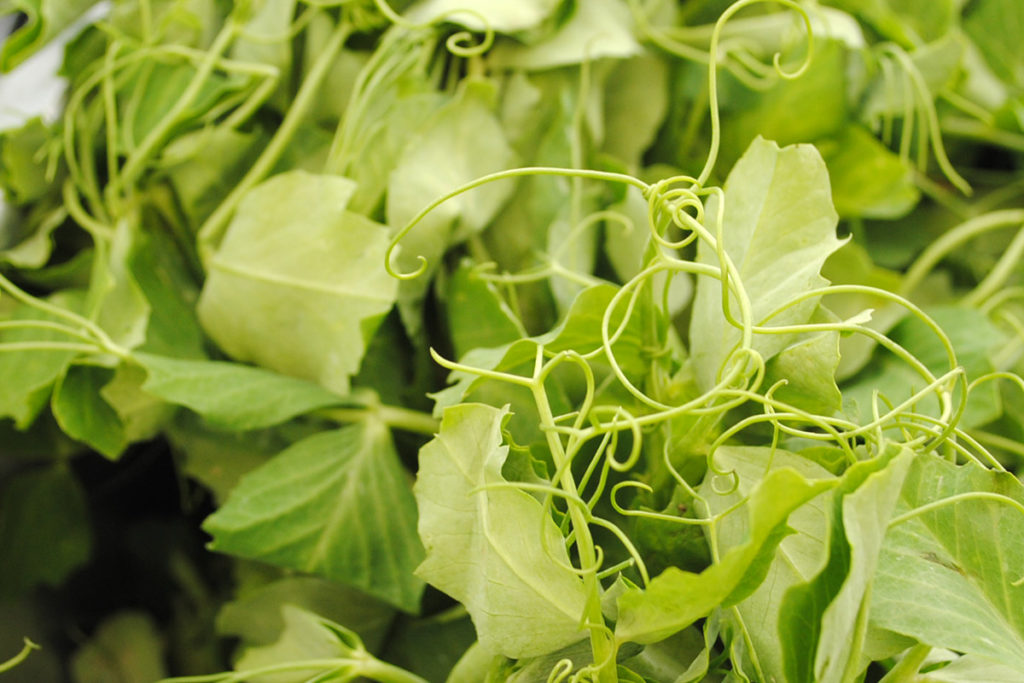
Pea shoots: Typically available in the spring, pea shoots are the leaves that adorn the common pea plant. They are bright green, crisp, and taste much like their namesake. They can be enjoyed raw or cooked and pair well with meat, beans, and pastas.
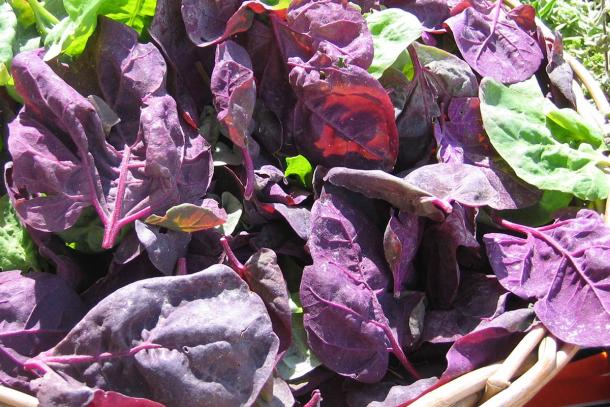
Orach: Also called mountain spinach, this bright magenta vegetable has a mild chard-like flavor but tastes saltier than most greens, as the minerals from the soil are stored in the leaves. It can be eaten raw in salads or cooked like spinach. Like beets, it can color a whole dish pink!

Spinach: Spinach has been cultivated for over 2,500 years. It is full of iron, calcium, fiber, and vitamins A and C. It also contains folic acid, chlorophyll, and antioxidants. Spinach has a subtle yet assertive flavor, often with iron or metallic notes. It is sweetest during cold weather.
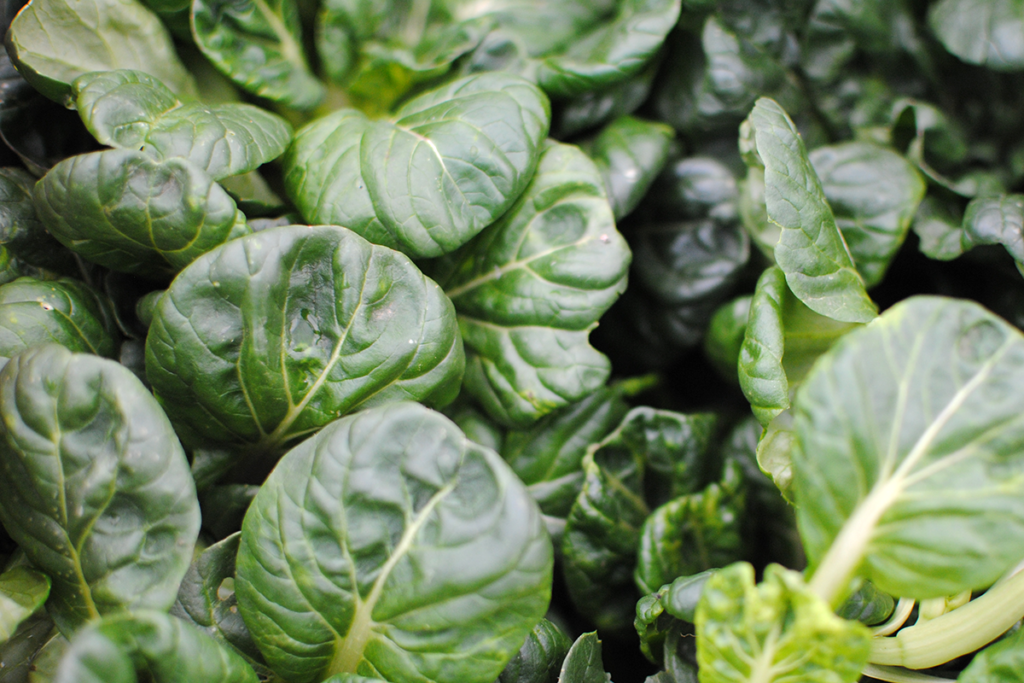
Tatsoi: An Asian green also known as spoon mustard, tatsoi has dark green spoon-shaped leaves, a soft creamy texture, and a subtle yet distinctive flavor. Tatsoi is a great addition to salads, stir-fries, or used as a spicier substitute for basil in pesto.
Topics: Culinary, Farmers market, Produce guides, Vegetables
